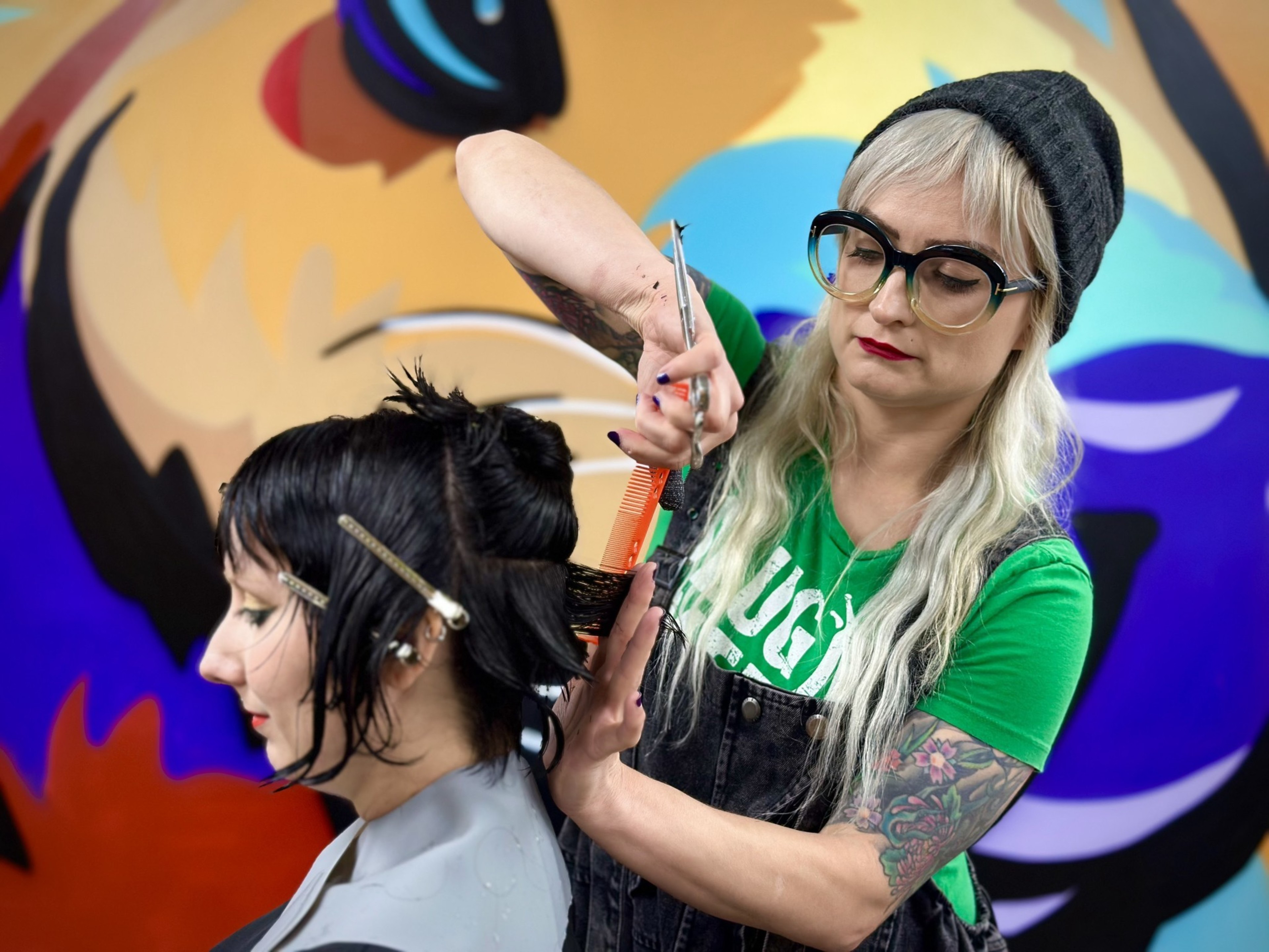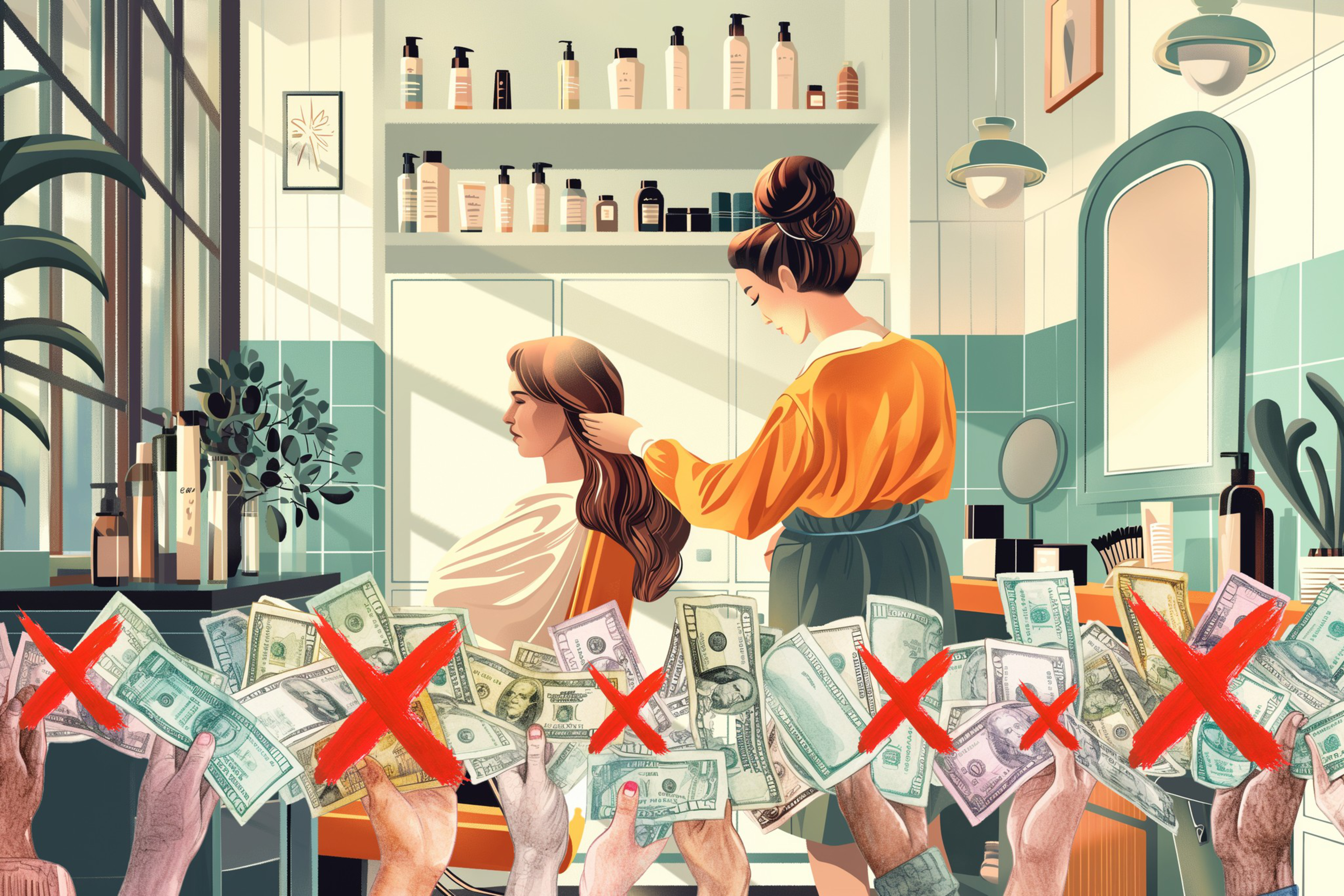Emma Maciaszek, a 24-year-old hair stylist, opened Poppy Salon (opens in new tab) in February in the Inner Richmond. This was the first time Maciaszek — who specializes in color services such as “lived-in” blond, highlights and balayage — had full ownership of her work, and she was ready for a paradigm shift. “On June 1st, I will be updating all services to hourly, gratuity-free pricing,” she announced on Instagram (opens in new tab).
Goodbye, “girl math (opens in new tab),” surprise fees and awkward interactions — hello, price transparency.
“People are so fed up with tipping culture. … It’s out of control,” said Maciaszek. “Plus, I want a sustainable wage and to be able to calculate my income.”

The shift, one undertaken by a growing number of Bay Area salon owners and stylists, has upended the ingrained, albeit unpopular, tipping culture in the beauty industry. An estimated 15% to 25% (opens in new tab) of U.S. hair stylists’ income comes from tips. And despite how much customers hate tipping — 66% of those surveyed by Bankrate (opens in new tab) said they dislike the practice, and 30% said it is “out of control” — it’s so deeply entrenched that many stylists have found it impossible to uncouple the service from the service gratuity.
But gratuity-free pricing is having a moment in the Bay Area hairstylist community, much as it did several years ago in the restaurant industry. In that case, many restaurants had to quickly backtrack (opens in new tab)after facing blowback from servers (opens in new tab) or customers. Stylists, however, may be better positioned to enforce an equitable pricing model that promises a better experience for all parties.
Gen Z clients are especially receptive to gratuity-free pricing, said Maciaszek, who removed the “add tip” option from her Stripe checkout. She charges $165 an hour, a price chosen based on her eight years of experience and the expenses she incurs. It’s roughly equivalent to what she earned with tips, she said — previously, she charged around $285 for highlights, which typically takes around two hours on fine hair; with a 20% gratuity, it came to $342.
Every client receives a free consultation, in which she assesses their hair and gives a quote based on the estimated length of service. For thick hair, a root touch-up might take two hours; for fine hair, it could be one. Maciaszek includes a 15-minute grace period to account for extra work. “If something takes two hours and 15 minutes, I’m not going to charge you for that 15. I’m not breaking it down by the minute. That’s icky,” she said. “You should come in and know exactly what you’re going to pay.”
Cassie Belcher, a stylist and owner of Sanctuary Salon (opens in new tab), (opens in new tab) which opened in January in Union Square, takes a similar approach.
“No surprises. No add-ons. The price you see when you book is the only price there is,” states her website. She charges $125 for an hour of her time; other stylists in her salon charge $50 to $190, depending on experience level.
Belcher tries to make the process as foolproof as possible. She has instructed her stylists to tell clients during the consultation process exactly how long their service will take, so they know the price coming in. “If for any reason a service runs over, then [we] eat the cost,” she said, though she does ask clients to book more time for their next appointment.
Having a tip-free salon has made it challenging to hire, she said, as many stylists have grown accustomed to the extra income. Some hirees worry about not making as much, while others enjoy the “rush” of being tipped for their work. But these fluctuations are exactly why Belcher changed her model: “The goal is to create a more equal and fair experience for everyone.”
There is one party that responds uniformly well to the change: “Clients feel relieved that they don’t have to worry about tipping on top of an already expensive hair service,” she said.
Tipping fatigue is real
Karrie Dies Ramsgaard (opens in new tab), an independent precision hair-cutting specialist at Stone and Rye Salon in Pacific Heights, transitioned to a gratuity-free pricing model in 2021. “Hair salons are broken,” she said. “We’re treated like service providers, but we’re craftsmen.”
For clients who struggle with the pricing – “which is about the same, just with the tip included” – Ramsgaard offers a comparison. “Think of it like paying for a massage,” she tells them. “You pay for the length of the treatment, not just the treatment itself.” Her clients have appreciated the shift — especially those from Europe, where tipping culture remains blessedly foreign.
Katya Yoshida (opens in new tab), owner of Capybara Hair Lounge (opens in new tab) in Walnut Creek, was another early adopter.
“I switched to gratuity-free in 2021, because what we were doing was BS,” she said. Hairstylists were burning out from double- and triple-booking clients and not taking breaks. Many began offering services they didn’t enjoy, like applying hair extensions, because of the high markup.
Hourly pricing provided a better way for her to calculate income and better services for clients, she said. Now, every client who needs an Olaplex conditioning treatment, which takes around five minutes to apply and typically costs $40, receives one at no extra charge. “The overhead evens out,” she said.
The five other stylists at Capybara Hair Lounge, which opened July 14, charge from $75 to $160 an hour. Gratuity-free pricing offers other benefits to the business: Checkout is digital, and with no surprises, there’s no conflict. Plus, Yoshida added, “You don’t need a receptionist anymore.”
There is a learning curve to the no-tipping lifestyle, she admits. Some clients are so indoctrinated to tipping that they’ve tried to slip cash into her pockets. She always returns it, gently asking them to write a review instead. “That helps us be sustainable long-term,” she said.
Universe Walker, who runs Scarlet Salon (opens in new tab) in Berkeley and Knuckleheads & Harlots (opens in new tab)barbershop in Oakland, also made the switch in 2021. Her salons’ clients book by blocks of time, based on the stylist’s experience, education and demand. Price transparency serves both staff and clients, Walker explained. “No tips. No add-ons. No upcharges. No more guessing,” she wrote on her website.
Julie Wood, 45, who co-owns Wood Salon (opens in new tab) in Berkeley, said the hourly, tip-free pricing model is the future of the industry. “We do so much behind the chair — we are creatives, chemists, therapists, and it’s physically demanding,” she said. “It elevates our industry to move toward flat rates.”
The stylists who’ve gone tip-free all say the move has benefited their business, with most making about the same as or more than before — minus the uncertainty. However, Maciaszek of Poppy Salon noted that it might take time for all stylists to embrace this model. “When stylists receive cash tips, they don’t always declare it [on their taxes], seeing it as their ‘fun’ money,” she said. “But I want a stable income. When I want to buy a house, I don’t want it to look like I’ve made no money because people have paid me in cash.”
Belcher, who has worked in hair for three decades, said there is “resistance to change in the industry.” But, she added, “if stylists took a moment to realize how their income is being subsidized … their perspective might shift. It’s a low rumble in the industry right now.”
